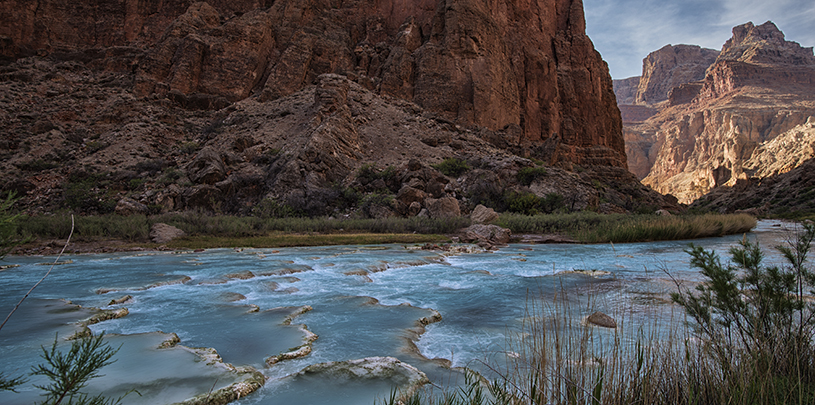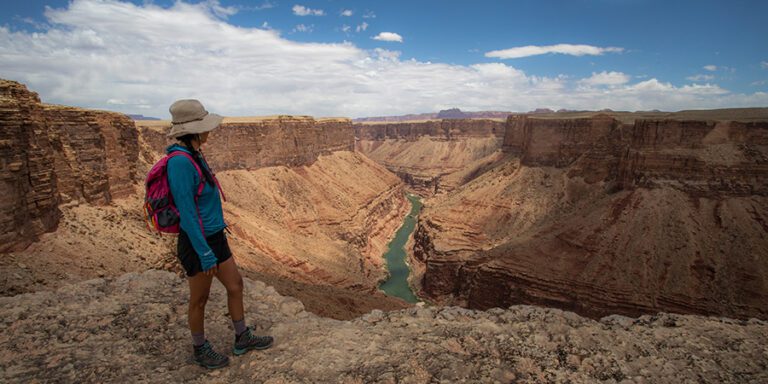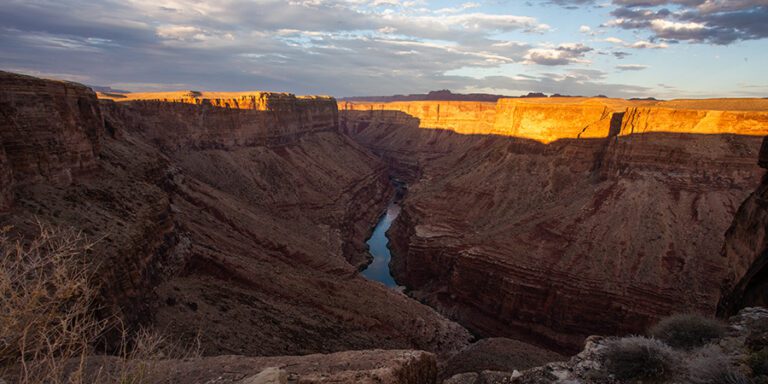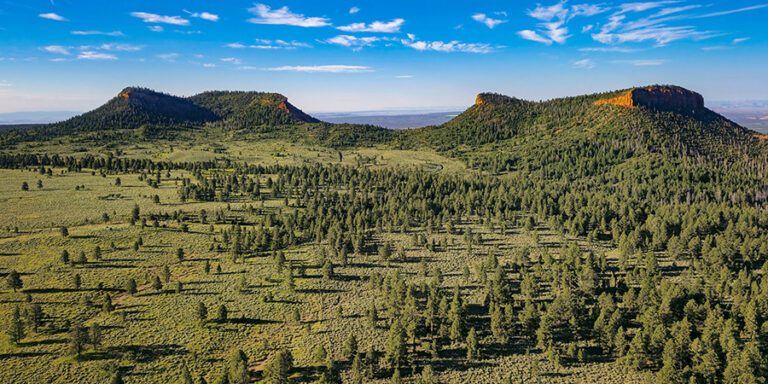
Federal agencies in the Department of the Interior have raised several concerns about the proposed Big Canyon hydro project and its potential impacts on the Little Colorado River.
Federal agencies have raised concerns about a proposal to build a hydroelectric project near the Little Colorado River and its potential to harm endangered fish, Grand Canyon National Park, cultural values, and tribal water rights.
This summer, agencies within the U.S. Department of the Interior filed joint comments to the Federal Energy Regulatory Commission (FERC) in response to Pumped Hydro Storage LLC’s request to study the feasibility of the Big Canyon Pumped Storage Project, the company’s third hydro proposal in the Little Colorado River region.
The Big Canyon project would be built on Navajo Nation land in and above Big Canyon, a normally dry tributary canyon, and would require pumping 17-19 billion gallons of groundwater from the underlying aquifer to fill four reservoirs. During a 60-day public comment period that ended in early August, the U.S. Fish and Wildlife Service, National Park Service, and Bureau of Indian Affairs flagged several issues, with negative impacts to aquatic and land resources chief among their concerns.
Public comment period for Big Canyon project
The Department of the Interior was one voice among many who raised concerns during the comment period. Native communities and nations, including the Navajo, Hopi, and Hualapai tribes, strongly opposed the project and the permitting process, which is disrespectful to tribal sovereignty. The developers never consulted the Navajo Nation, despite proposing to build the project on its land. The Grand Canyon Trust submitted over 62,000 public comments from Grand Canyon advocates like you, and, as part of a coalition of conservation groups represented by Earth Justice, filed a motion to intervene.
Let’s take a look at what the Interior agencies had to say about the Big Canyon project.
Adverse effects on the Little Colorado River and humpback chub
Developers claimed the Big Canyon project eliminated “all of the aquatic issues” of its earlier proposals by damming a normally dry tributary canyon instead of the Little Colorado River itself.
But the agencies disagree. They say the company’s plan to drill wells and pump groundwater to fill the Big Canyon reservoirs is problematic because the wells would tap into the same aquifers that supply the Little Colorado River with water. The agencies conclude that the proposed groundwater pumping would reduce the Little Colorado River’s baseflow, alter the temperature and chemistry of its waters, and negatively affect the future of the endangered humpback chub.
Adverse effects on the Grand Canyon
Damming Big Canyon would also prevent the tributary’s sediments from reaching the Grand Canyon during periodic flash floods. The Little Colorado River is the Grand Canyon’s largest source of sand and sediment that builds beaches and backwaters, essential to sustaining shoreline vegetation and wildlife, river campsites, and archaeological sites within the national park.
The federal agencies conclude that the Big Canyon project could “significantly affect park resources by creating major changes in the Little Colorado River,” and that each agency would require consultation if the project moves forward.
Adverse effects on cultural values
The proposed Big Canyon project would also adversely affect the Grand Canyon’s cultural landscape. The federal agencies note: “The significance of the Grand Canyon and its major tributaries transcends cultures as people travel from all over the world to visit a place where many ancestors of contemporary native people first came to know this world.”
The federal agencies say that at least two tribes support designating the Grand Canyon and its tributaries as a Traditional Cultural Property, for preservation in perpetuity under the National Historic Preservation Act.
The dam developer’s application identified only the Navajo Nation as being affected by the proposed project. However, the Little Colorado River is an important sacred place to at least 10 other tribes. Therefore, the federal agencies advise FERC and the applicant to consult all affiliated tribes, if the application is granted.
Adverse effects on tribal water rights
Lastly, the three agencies cite Navajo and Hopi water rights as a major obstacle to approving the Big Canyon project proposal. The tribes have senior water rights and rely primarily on groundwater to supply historic, present, and future needs. According to the agencies, the amount of groundwater Pumped Hydro Storage LLC’s proposal would require would, “detrimentally impact the water resources on which the Navajo Nation relies.”
Because the proposed Big Canyon project would consume millions of gallons of groundwater, the Interior Department questions if enough water even exists and discourages the dam developers from pursuing the project.
What’s next?
The U.S. Fish and Wildlife Service, National Park Service, and Bureau of Indian Affairs, have reiterated serious concerns about damming the Little Colorado River basin in comments submitted to FERC. These comments about the pending proposal to pump groundwater into Big Canyon reservoirs complement those submitted by tribal nations, the Arizona Game & Fish Department, conservation groups, and thousands of citizens.
By early next year, we expect FERC to approve a preliminary permit to conduct feasibility studies for the proposed Big Canyon project. We are committed to keep you and a broad coalition of concerned citizens informed and engaged in helping to protect the Grand Canyon and its sacred waters.




